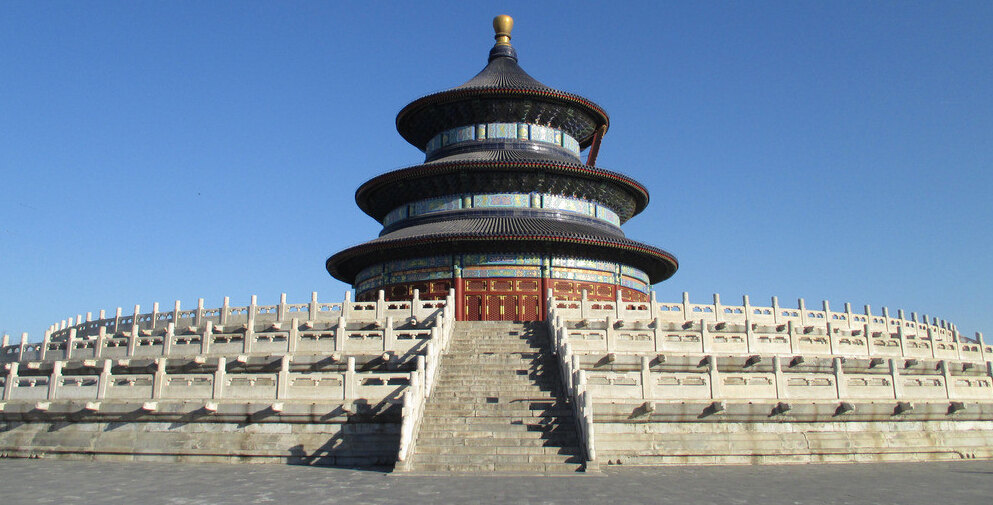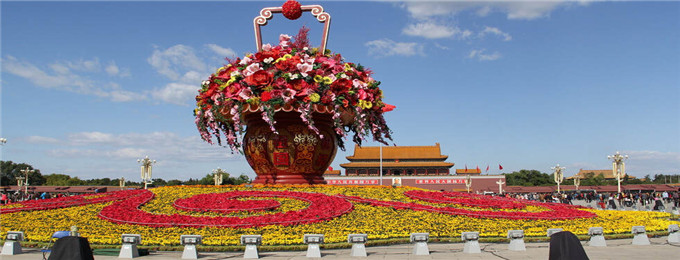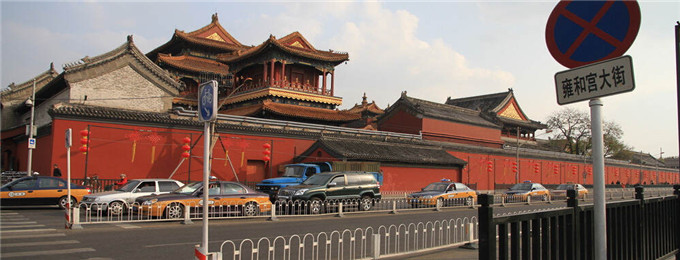
5-day Beijing Classic Tour Without Shopping
Trying no-shopping China tour to have more enjoyable tour experience. Highlights include Temple of Heaven, Tiananmen Square, Forbidden City, Summer Palace, Mutianyu Great Wall, Ming Tombs-Dingling, Hutong Rickshaw Tour, and Yonghe Lama Temple.
Our local professional guide and experienced driver will expect you at the airport after your baggage reclaim and customs clearance, and then escort you to check in the hotel in downtown area. Relax during the rest time of the day to recover from the jet leg. You will get some suggestions about how to spend the rest time of the day from our tour guide.
Destination (club)(optional activity)
Location: 7 Gongti Xi Lu,Chaoyang district
Tel: 86-10-6552 8180
website: www.bjdestination.com
Opening Hour: 8pm-3am Sun-Thu; 8pm-5am Fri-Sat. Free entry Wednesdays.
Brief Introduction: The original golden oldie. Despite being Beijing's longest-established LGBT venue (it was launched around 2004), Des, as it’s affectionately known to locals, has managed to remain top dog. The popular Friday and Saturday spectaculars are among the best-attended and most colourful in town, and the multi-level layout prevents most spaces other than the heaving dance floor from ever being intolerably overcrowded. International guest DJs and occasionally a sprinkling of go-go boys, drag queens or even the odd celebrity arrive on weekends to sweeten the pot. The confidential and free HIV testing clinic on the top floor, run by golden-hearted volunteers from LGBT NGO Danlan, is also a valuable addition. Drinks are buy-one-get-one-free before 10pm. Entry charges vary and usually include a free drink. Regulars can purchase membership cards (500RMB or 1,000RMB) for discounted entry and drinks deals.
Attention:
1. If you have no intention to Bar visiting, please tell your trip advisor who will omit that activity, requote the tour and give you the practical arrangements immediately.
2. Bars do have rest time and not available in whole 365 days, and we will recommend the equivalent ones to you based on your specific touring date if the bars closed. If you do have some in mind, please feel free to let me know.
3. Generally, the bar visiting activity is placed at the first night of a new destination for giving both you and your tour guide much more time to rest and prepare for the next days' activity. However, we would pull it out and arrange to 2nd or 3rd day if it has time conflict with your flight, or sightseeing.
Tiananmen Square
The Tiananmen Square is the largest city square in the world (440,000 square meters), which was originally designed and built in Beijing in 1651 and enlarged to its present size in 1958. Nowadays, it has become a great relaxing place for the common people to do exercises, and on holidays, the whole square will be covered with fresh flowers. Meanwhile, it is sitll the key tourist area of Beijing for here has Tianan'men Gatetower, Monument to the People's Heroes, Chairman Mao Memorial Hall, Great Hall of the People, China Revolutionary Museum and Museum of Chinese History. If you have chance, the Tianan'men Flag Raising Ceremony should not be missed. Chinese military honor guards march with perfect rhythm and synchronicity to raise or lower the national flag.
Forbidden City
Located at the city center and called Gu Gong in Chinese, Beijing Forbidden City was the imperial palace for twenty-four emperors during the Ming(1368-1644) and Qing dynasties(1644-1911). Lying to the north of Tiananmen Square it is the world's largest palace complex and covers 74 hectares. Surrounded by a 52-meter-wide moat and a 10-meter-high wall are more than 8,700 rooms. Construction of the palace complex began in 1407, the 5th year of the Yongle reign of the third emperor (Emperor Chengzu, Zhu Di) of the Ming dynasty. It was completed fourteen years later in 1420, and then the capital city was moved from Nanjing to Beijing the next year. Here is the right place to know the China's glorious past and imperial culture.
Summer Palace
The original Summer Palace was built for celebrtaing the birthday of Emperor Qianlongs' in Qing Dynasty (1644-1911) but burnt down by Anglo-French allied forces in 1860. Rebuilt in 1888 by Empress Dowager Cixi but destroyed by the Eight Power Allied Forces in 1900. What you can see was rebuilt since 1903 though some architectures are destroyed forever. It is the largest preserved imperial garden and a former summer retreat for emperors. the 726.5 acres' area and three quarters water, Summer Palace is a perfect example of refined craftwork with finest materials, Longevity Hill, Kunming Lake etc with over 3,000 structures: pavilions, towers, bridges, corridors etc.

Mutianyu Great Wall
The Great Wall is a series of stone and earthen fortifications stretching more than ten thousand miles from west to east on the boundless area of Northern China. It is seen as a major architectural miracle in the world. The Great Wall was a great defense project in ancient time and it embodied the ancient people of strong will and high intelligence, reflecting China's remarkable achievements of ancient engineering and also showing the long history of the Chinese nation. The Mutianyu section, 2,500 meters (2,734 yards) long, connects the Juyongguan Pass in the west and Gubeikou in the east. It is a superb location to appreciate the grandness of the Great Wall as well as to avoid the crowds at Badaling.
Ming Tombs-Dingling Mausoleum
As the representative of the Ming Thirteen Mausoleum where buried 13 emperors and 23 empress of the Ming Dynasty (1368-1644), Ding Mausoleum is the tomb of the Emperor Zhu Yijun, the 13th emperor of Ming Dynasty, and it is also the only one whose underground palace was unearthed. Buildings on the ground consist of Treasure City, Grand Mansion, Ling'en Hall, two ground auxiliary halls, Ling'en Gate, Ling Gate, Shenbo Oven, Dinvine Wardrobe, Divine Stock, Slaughter Pavilion and Wailuo City, etc. The Grand Mansion is definitely the highlight of the Dingling. It is not only gallant and splendid, but also does not have a piece of wood and a nail. The rafters, brackets and inscribed board of the upper and lower caves are all inlaid with white stone sculptures and painted with colorful pictures which look like wood structure. The underground Palace consists of 5 underground halls buried Emperor Zhuyijun and two Queens, Xiaoduan and Xiaojing.
Beijing Zoo
Situated to the west of Beijing Exhibition Center, Beijing Zoo covers an area of over 40,000 square meters and houses over 7,000 creatures of 600 different species, including the giant panda, red-crowned crane and Pere David's deer-all unique to China-as well as the African giraffe, rhinoceros, chimpanzee and antelope; American continent; wild ox from Europe; and elephant and gibbon from India. Originally, it was known as the Sanbeizi Gardens in the 18th century, supposedly named after the third son of Emperor Kangxi, Prince Cheng Yin. During the Qing, part of the Sanbeizi Gardens called the Garden of Continuity (Jiyuan) became the private property of an official in the Bureau of Palace Affairs.
Hutong Rickshaw Tour
If you want to know Beijing culture and local history, Hutong should not be missed, and the best way to tour Hutong in limited time should be the rickshaw which saves time and energy and enlarges your tour range. The lanes have their own layout and structure, and when viewed from the air the combination of the lanes and courtyards resemble a chessboard with delicate gardens, fine rockeries and ancient ruins this makes them a wonder in the world. In the past, Beijing was composed of hundreds of courtyards around the Forbidden City, and these lanes stretched out in all four directions, connecting the different kinds of courtyards in the city. However, as the requirement for city construction, the number of them has fallen dramatically from 3250 to 1000.
Yonghe Lama Temple
Built in 1694 during the Qing Dynasty (1644-1911) as the residence of the Emperor Yongzheng (the third emperor of the Qing Dynasty) before he ascended the throne, Yonghe Lama Temple is the largest and best-preserved lamasery in Beijing. in 1744, the residence was completely converted into a lamasery, so the features make it very different and unique from others, looks like a mini-palace with yellow glazed tiles on the roof and red walls circling the group of buildings.

Your private car, driver and tour guide will be ready and waiting at your hotel lobby to get you to the airport on time. Sit back and relax as they help you check-in and escort you to the correct security gate.
| Nov.1 - Mar. 31 | Superior Class | Deluxe Class |
|---|---|---|
| 2-5 travelers | $643  |
$762  |
| 6-9 travelers | $439  |
$572  |
| 10 travelers & above | $397  |
$531  |
| Apr.1 - Oct.31 | Superior Class | Deluxe Class |
| 2-5 travelers | $662  |
$795  |
| 6-9 travelers | $465  |
$599  |
| 10 travelers & above | $418  |
$552  |




